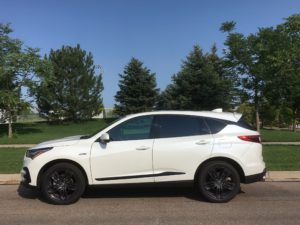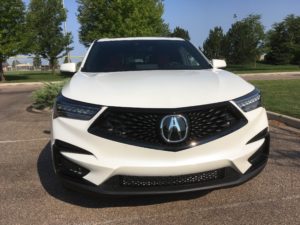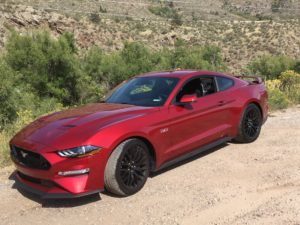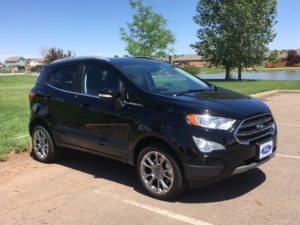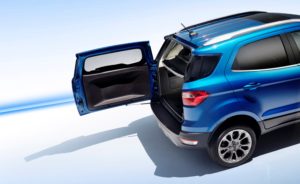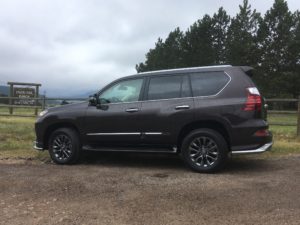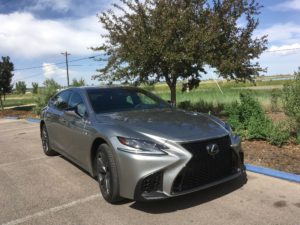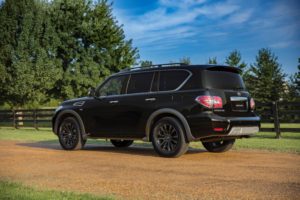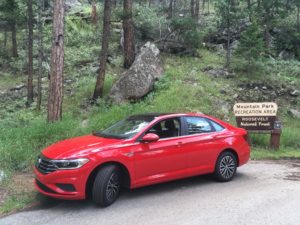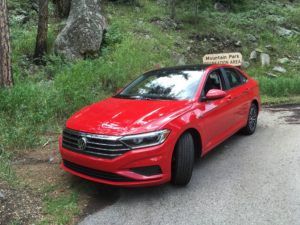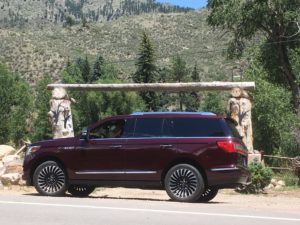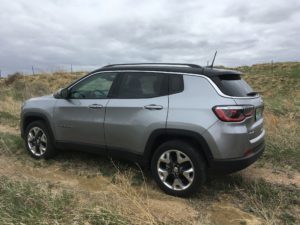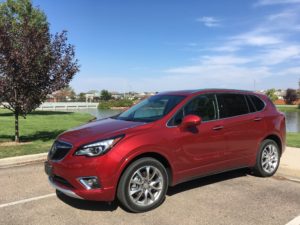
A spirited performer it is, the 2019 Buick Envision, right out of a GM factory in China.
It’s mildly impressive, not only for its performance, but also its exterior style and interior comfort and quietness.
The Envision was designed originally for the Chinese market and went into production in the fall of 2014 at a plant in Yantail, southeast of Beijing. Buick is among auto sales leaders in China and the Envision was no exception. So, after its successful launch there, GM two years ago began importing the Envision over here, even against some grumbling from U.S. auto workers.
With its 108.3-inch wheelbase, the Envision fits right in between the small Encore (100-inch wheelbase) and large Enclave (121-inch), lending strong SUV presence in Buick showrooms.
The Envision Premium II all-wheel-drive model I tested carries a sticker price just a few bucks short of $50,000 and competes against other luxury compact/midsize SUVs – the Audi Q5, BMW X3, Acura RDX, Volvo XC60, Mercedes GLC, Jaguar F-Pace and others.
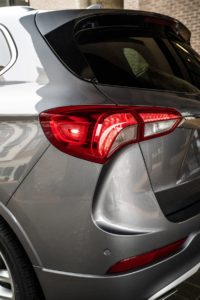
For 2019, the Envision shows a flying-wing front grille, winged headlights and winged taillights. The review model was finished in chili red. Two three-porthole insets across from each other seem misplaced atop the hood, rather than along the sides.
Biggest news, though, in the Premium II AWD is the 9-speed automatic transmission which replaces a 6-speed, and a torque increase of 35 lb.-ft. in the 2.0-liter, turbocharged 4-cylinder engine. Horsepower rating is 252, with torque of 295 lb.-ft. Base engine is a 197-hp, 2.5-liter 4-cylinder.
The new 9-speed adds smoothness and more immediate power; a switch on its shifter knob adds a bit of manual mode.
The Envision is a nimble handler, which accommodates very well the quickness of the turboed power. It rides on Hankook 235/50R19 tires. The better response is somewhat costly in the fuel department, as the Envision AWD averaged only 20.5 miles per gallon and is rated at 20/25 mpg. The naturally aspirated base engine with AWD carries a 21/27 rating.
The interior is brightened by a panoramic roof; leather-covered front-seat cushions, fairly flat with lightly bolstered seatbacks, are comfortable. In the roomy back seat, occupants are in control of their own air/heat settings.
Cargo space, accessed by use of a power liftgate, is 26.9 cubic feet; fold the second-row of seats and the storage space expands to 57 feet. The rear seatbacks can be flattened by pulling handles placed along sides of the far-back cargo area.
Other highlights are an 8-inch color infotainment screen with navigation and Bose premium audio, a head-up display for the driver, heated and cooled front seats and heated rear seats.
The Premium II AWD model is Envision’s best-equipped and most expensive; cheaper versions are the Premium, Essence, Preferred and Envision base. The base model is front-wheel-drive only.
Base price of the Premium II is $44,595. The addition of forward automatic braking, adaptive cruise control, surround vision, 19-inch aluminum wheels and the moonroof raised sticker total to $49,925.
Of concern to Buick officials regarding the Envision is the 25 percent tariff enstated on Chinese imports by the Trump administration. GM has asked for an exemption for the Envision from the tariff. If the full tariff was applied to the cost of the vehicle, it could raise the price $8,000 to $10,000, and it could result in GM pulling the Envision from the U.S. market.
